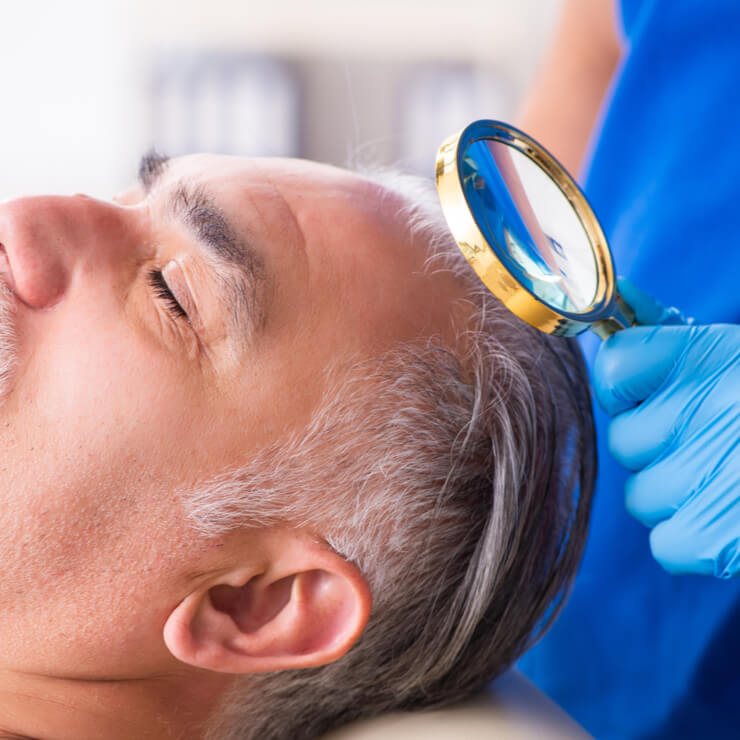
Does PRP Work for Hair Loss? | Baldness Treatment San Francisco
The question “Does PRP work for hair loss?” is one we hear daily at our San Francisco practice. The short answer is yes, but with a critical caveat: it works best for the right person. Platelet-Rich Plasma (PRP) therapy is a promising, non-surgical treatment that can help revitalize dormant follicles. For patients with mild to moderately progressing hair loss, the outcomes can be significant, helping to thicken existing hair and slow further thinning. Let’s get straight to how it works and what you can expect.
At The Appearance Care Center, under the medical direction of Dr. Corey S. Maas, we approach hair restoration with a clinician’s eye. We understand that the treatment’s success is not guaranteed for everyone. It is not a cure for baldness, but rather a regenerative treatment that can yield impressive betterment for those who are ideal candidates. Our process begins with a thorough evaluation to understand the cause of your hair loss and decide if PRP is the right path for you.

The Science of PRP: How Your Own Blood Can Stimulate Hair Growth
The principle is elegant: your blood is drawn and processed to concentrate the platelets and growth factors, creating Platelet-Rich Plasma. This concentrated solution is then injected into the scalp in areas of thinning. The growth factors act as signaling molecules, “waking up” weakened hair follicles, prolonging their growth phase, and increasing hair shaft thickness. Think of it as a targeted nutrient boost that revitalizes the microenvironment of the follicle.
“The key to PRP’s success is patient selection and technical execution. It’s a powerful tool in our arsenal for hair restoration, but it’s not magic. We see the best outcomes in individuals who are in the early to moderate stages of pattern hair loss, where follicles are still present but miniaturizing. For them, the results can be truly transformative,” says Dr. Corey Maas, MD, FACS.
Are You a Candidate? Let’s Look at the Evidence
| IDEAL FOR YOU IF… | CONSIDERATIONS & CONSULTATION ADVISED IF… |
|---|---|
| You have mild to moderately progressing male or female pattern hair loss. | You are already completely bald in large areas (follicles are gone). |
| You want to thicken existing hair and slow further loss. | You have underlying health conditions or nutrient deficiencies like iron, zinc, or biotin that are not addressed. |
| You are committed to a series of treatments and maintenance. | You have a problematic blood supply to the scalp or certain medical conditions. |
| You prefer a natural, non-surgical approach to hair restoration. | You cannot tolerate the mild discomfort of the injections. |
What to Expect: The PRP Journey for Hair Loss
| Phase | Process | Timeline & Details |
|---|---|---|
| 1. Consultation | Health Review & Scalp Analysis | We understand your history and goals to decide if you’re a candidate. |
| 2. Preparation | Blood Draw & PRP Processing | A small sample of your blood is drawn and spun in a centrifuge for about 10-15 minutes. |
| 3. Treatment | Precise Micro-Injections | The concentrated PRP is injected into the treatment areas. The process is typically well-tolerated. |
| 4. Aftercare | Simple Guidelines | Avoid washing hair, intense heat, and sweating for 48 hours. |
| 5. Results | Gradual Improvement | You may see initial changes in 3-6 months. A series of 3-4 initial sessions, 4-6 weeks apart, is typically recommended. |
WHAT MAKES OUR PRP PROCESS EFFECTIVE:
- Medical-Grade Processing – We use a specialized centrifuge to ensure a highly concentrated and pure PRP solution, which is critical for the treatment’s success.
- Expert Injection Technique – Our Aesthetic Nurses are specially trained in the precise depth and pattern required to effectively stimulate the follicles.
- Comprehensive Evaluation – We assess your overall health and may recommend testing for nutrient deficiencies to ensure nothing is hindering your results.
- Personalized Treatment Plan – Your protocol (number of sessions, maintenance) is tailored to your specific pattern of loss and goals.
WHAT PRP CANNOT DO (AND WHY):
- Cannot Reverse Complete Baldness – PRP requires living, albeit miniaturized, follicles to work. It cannot create new follicles on a slick bald scalp.
- Cannot Override Significant Deficiencies – If your hair loss is driven by severe iron or other deficiencies, PRP alone cannot yield optimal results until the root cause is fixed.
- Not a One-Time Fix – Like most non-surgical treatments, PRP requires an initial series and maintenance sessions to sustain the results.
Ready to See if PRP is the Right Solution for Your Hair Loss?
If you’re tired of watching your hair thin and want to explore a proven, non-surgical treatment, we invite you to ask us all your questions. We can show you before and after photos of real patients and help you understand the potential difference it could make for you.
FAQs
1. How long does it take to see results from PRP?
A: Hair growth is a slow cycle. Most patients begin to notice a decrease in shedding and improved hair texture within a few months. More visible thickening and new growth typically become apparent around the 6-month mark, following the initial series of treatments. Patience and commitment to the treatment plan are key.
2. Do before and after images matter when choosing a PRP provider?
A: Absolutely. Before and after images offer real-world insight into a provider’s consistency and results. However, it’s equally important to choose a medical practice, like ours, that can properly evaluate your candidacy and rule out underlying medical issues that could affect your outcome.
3. I have a family history of baldness. Will PRP work for me?
A: PRP is most effective for persons with early-stage genetic hair loss (Androgenetic Alopecia). It is designed to strengthen follicles that are beginning to miniaturize due to genetic sensitivity. For severely advanced loss, the results are compared and may be less dramatic, and other options like hair transplantation should be discussed.
4. Is the treatment painful?
A: The discomfort is typically mild and brief. We use a topical numbing cream to maximize your comfort during the injection process. Most patients describe the sensation as a quick, minor pinch.
Schedule Your Consultation
The question isn’t just “does PRP work for hair loss?” but “will it work for you?” The answer lies in a detailed, honest consultation. We are committed to providing that clarity. If you are a candidate, this natural, regenerative therapy can help you get a better, thicker look and regain control over your hair’s future.
